Tens of thousands of people descended on Stonehenge this morning to mark the year's summer solstice.
Some 23,000 attended the neolithic site in Wiltshire, with others - including hippies and pagans - visiting the nearby Avebury stone circle.
The figure was down on the estimated 36,000 who attended last year and the 30,000 expected, to witness the sun rising on the longest day of the year.
But attendees were able to get a glimpse of the sun after it came over the horizon at 4.52am, despite cloud in the area.
Police said arrests were lower than in previous years, with nine people being held for drugs offences at Stonehenge.
A handful were cautioned for possession of Class A drugs, while no arrests were made at Avebury.
Sun rises over the longest day of the year: Thousands of pagans, druids and hippies descend on Stonehenge for this year's summer solstice
Figure was down on estimated 36,000 who attended last year and 30,000 expected at neolithic site in Wiltshire
But they were able to get a glimpse of the sun after it came over the horizon at 4.52am, despite cloud in area
Police say arrests were lower than in previous years, with nine people held for drugs offences at Stonehenge
By Mark Duell for MailOnline
21 June 2015
Daily Mail
Tens of thousands of people descended on Stonehenge this morning to mark the year's summer solstice.
Some 23,000 attended the neolithic site in Wiltshire, with others - including hippies and pagans - visiting the nearby Avebury stone circle.
The figure was down on the estimated 36,000 who attended last year and the 30,000 expected, to witness the sun rising on the longest day of the year.

Up it comes: Revellers watch the sunrise as they celebrate the pagan festival of Summer Solstice at Stonehenge in Wiltshire this morning

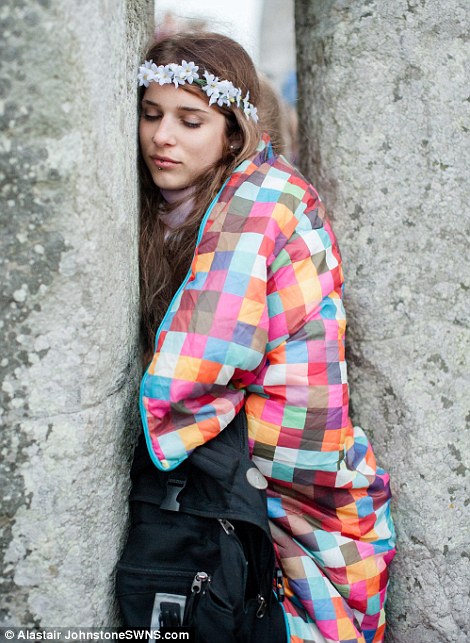
Flower power: The festival celebrates the year's longest day. Kate Bacik, 22, of Brighton, is seen bottom

Glorious sky: A woman takes a photograph on a phone just before the sun rises over Stonehenge at Summer Solstice in Wiltshire
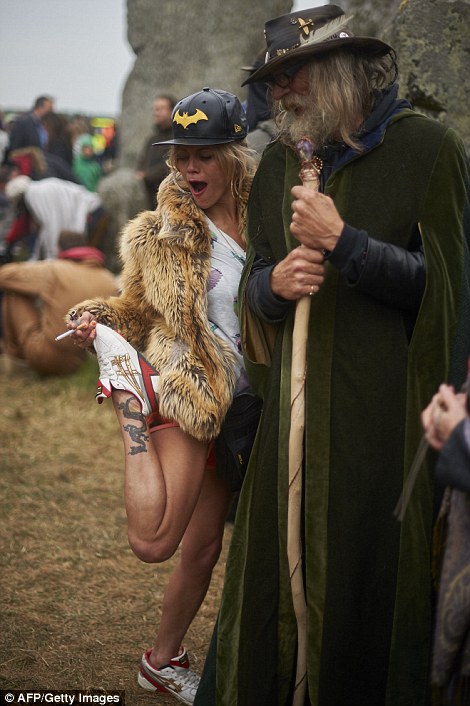
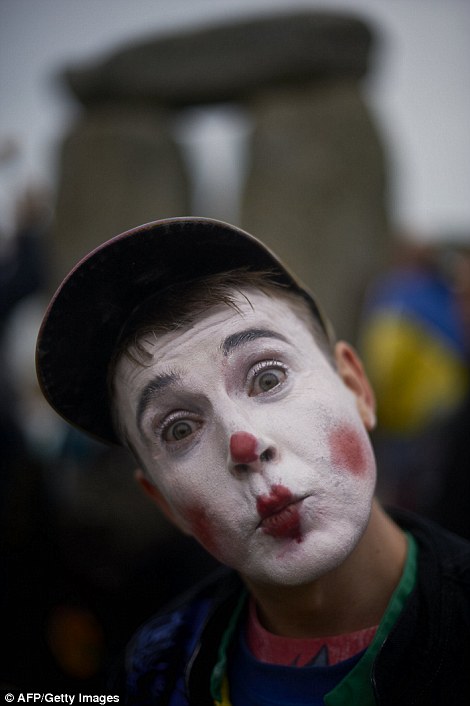
Annual event: Modern druids and people gather at the landmark Stonehenge every year to see the sun rise on the longest day of the year
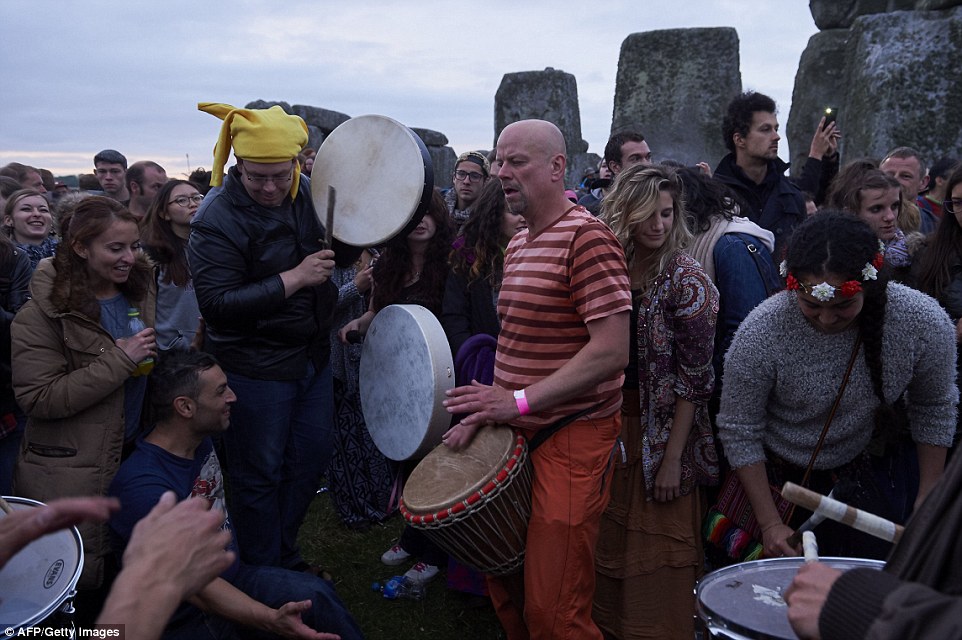
Musical accompaniment: It was estimated around 23,000 people attended the event, which passed relatively trouble free
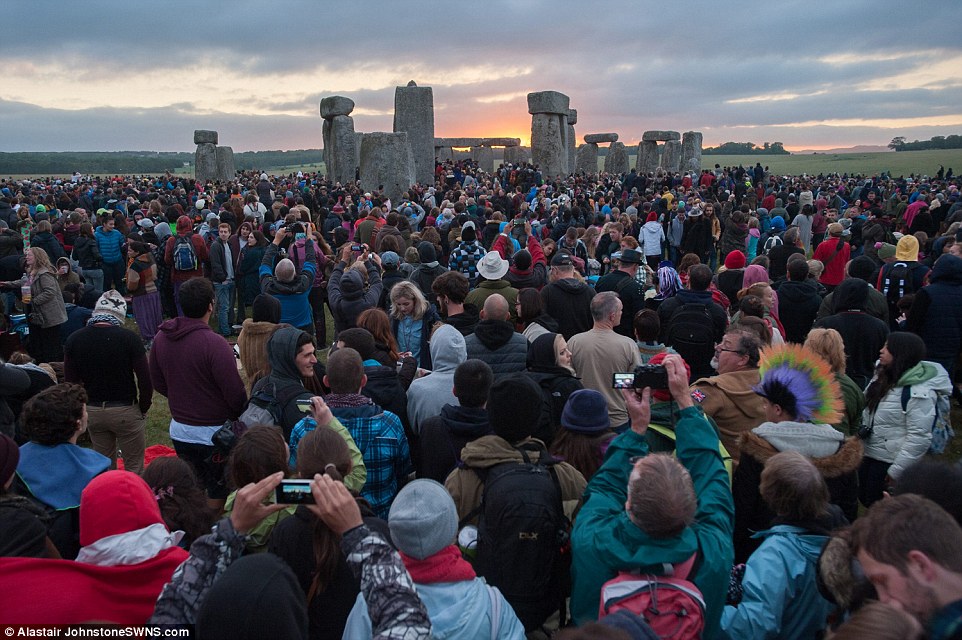
Landmark: Stonehenge was constructed so the rising sun only reached the middle of the stones for just one day of the year

Forever blowing bubbles: The solstice sunrise marks the longest day of the year in the Northern Hemisphere

Big event: The solstice, also known as the festival of Litha, attracts people from across the country and has been celebrated for centuries
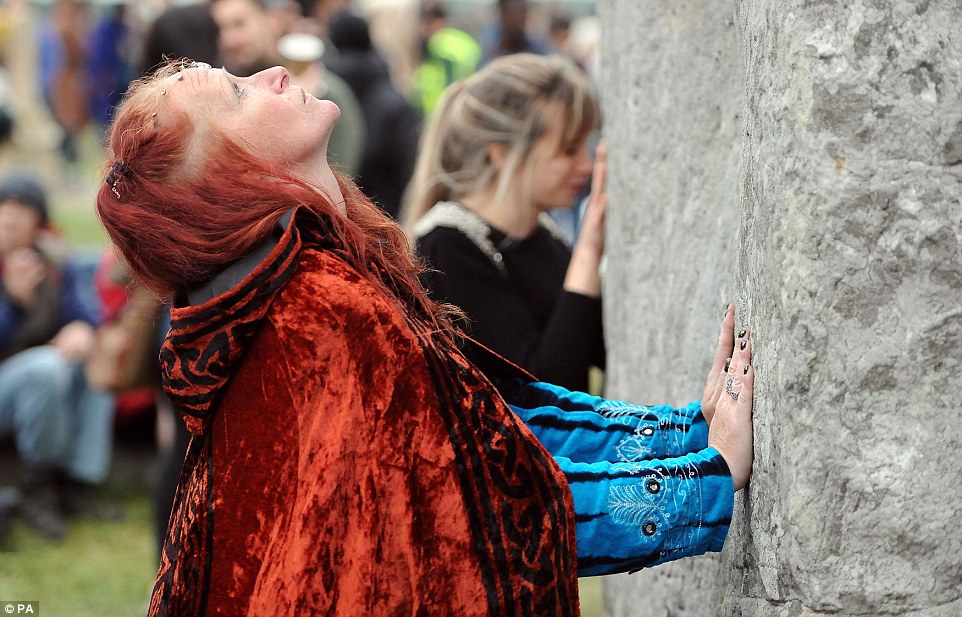
Feeling the power: Women touch the the stones at Stonehenge in Wiltshire, as thousands of people descended on the site to mark the event
But attendees were able to get a glimpse of the sun after it came over the horizon at 4.52am, despite cloud in the area.
Police said arrests were lower than in previous years, with nine people being held for drugs offences at Stonehenge.
A handful were cautioned for possession of Class A drugs, while no arrests were made at Avebury.
Wiltshire Police Superintendent Gavin Williams, who led the policing operation, said: ‘Solstice 2015 has been a great success.
'Approximately 23,000 people (were) celebrating at Stonehenge in the positive, friendly atmosphere as they waited for the sunrise.
‘This year the crowds were able to see the sun as it appeared over the horizon, before it disappeared under low cloud.
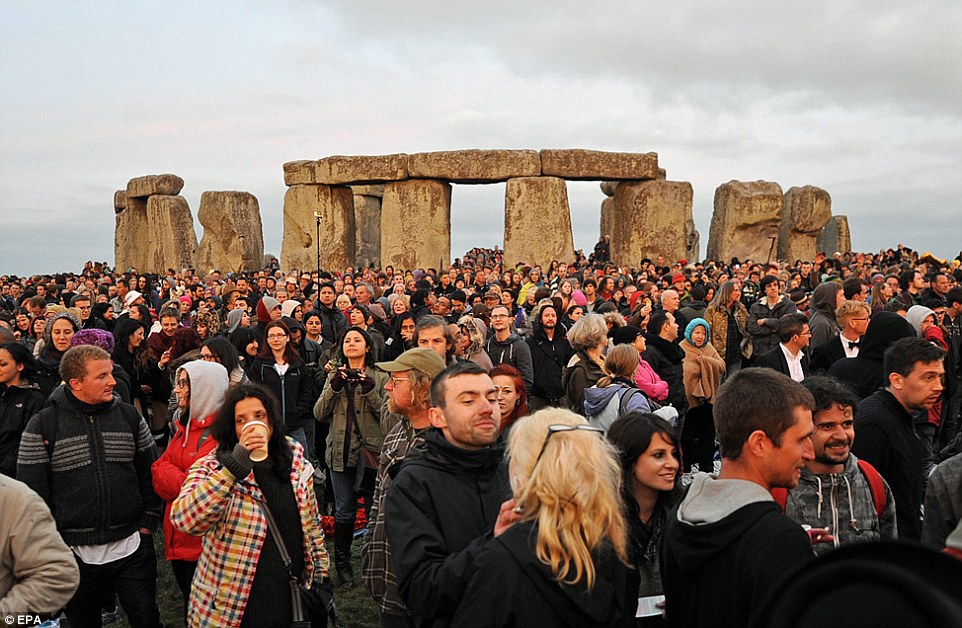
Neolithic site: Thousands of people have descended on Stonehenge to mark this year's Summer Solstice
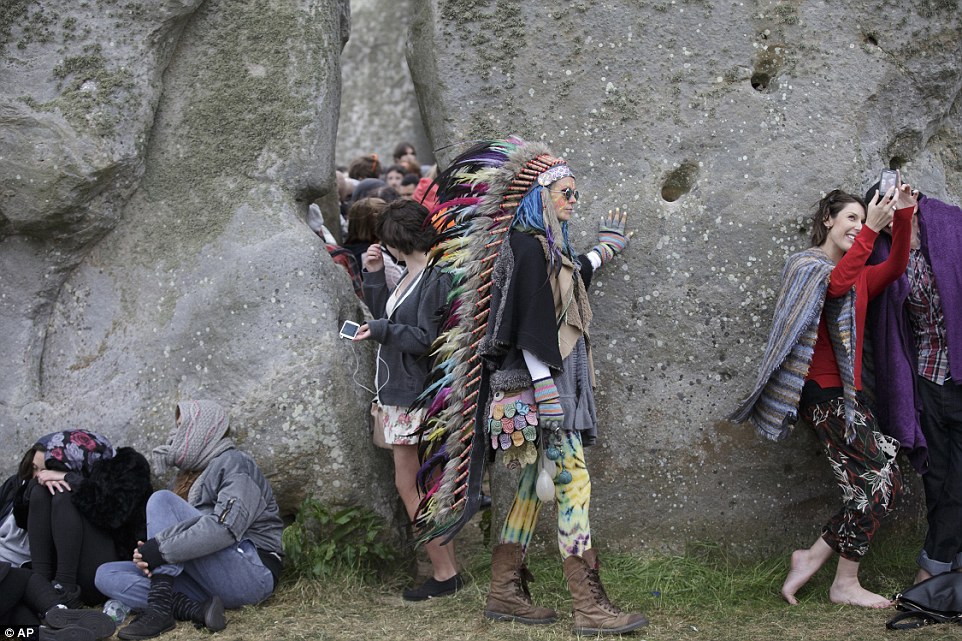
Hands on: People touch the stones as thousands of revellers gathered at the ancient stone circle Stonehenge to celebrate the Summer Solstice
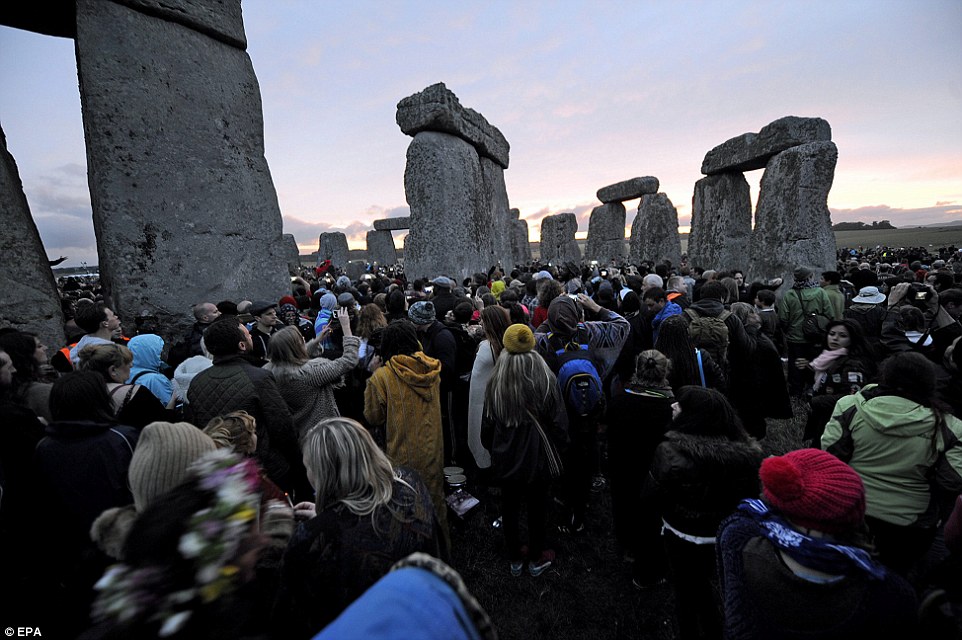
Welcomed in: Police said around 23,000 people attended the neolithic site in Wiltshire. The figure was down on the estimated 36,000 last year
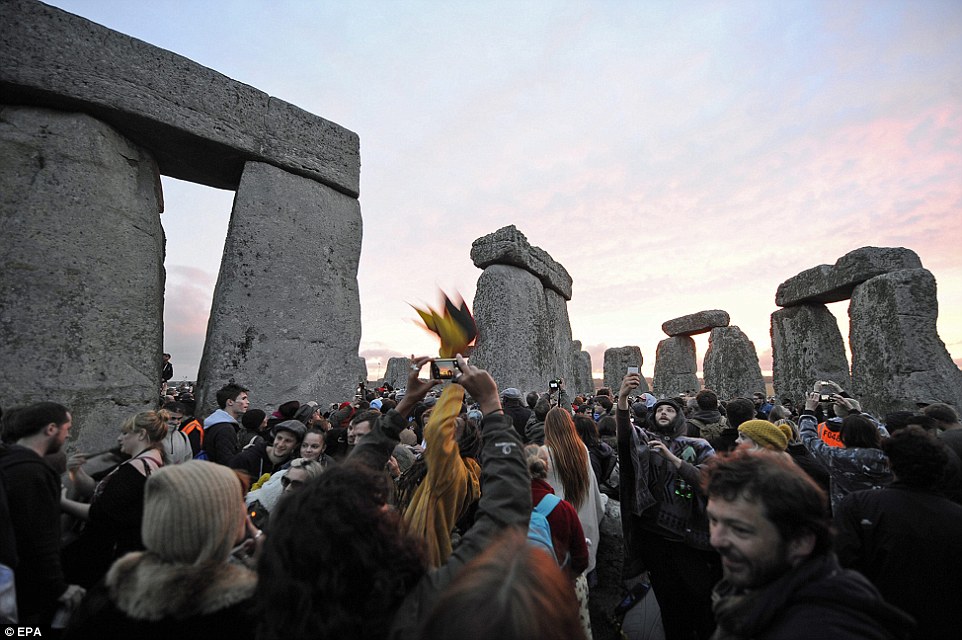 Capturing the moment: Recent pagan celebrations at the site began in the 20th century
Capturing the moment: Recent pagan celebrations at the site began in the 20th century
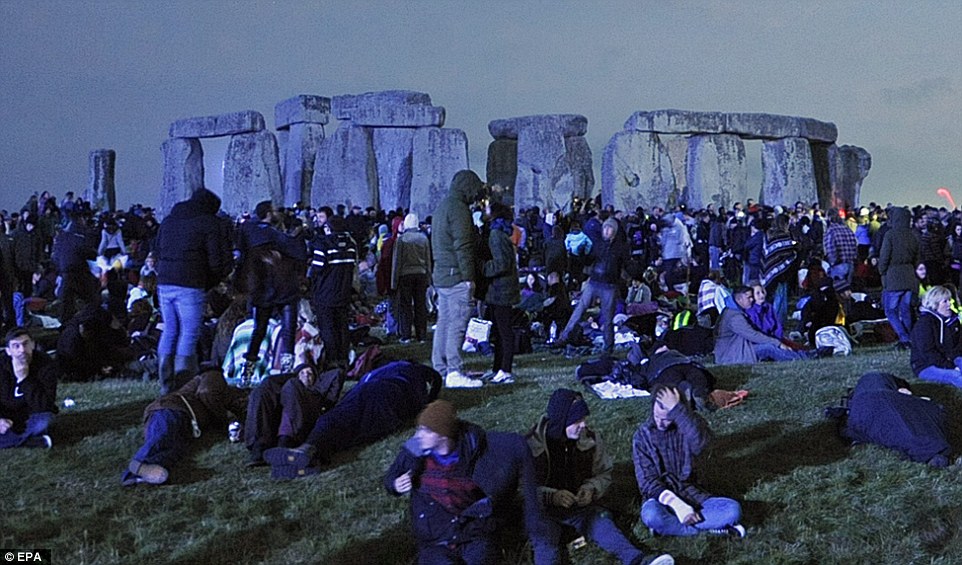
Historic: Stonehenge is believed to have been used as an important religious site by early Britons 4,000 years ago
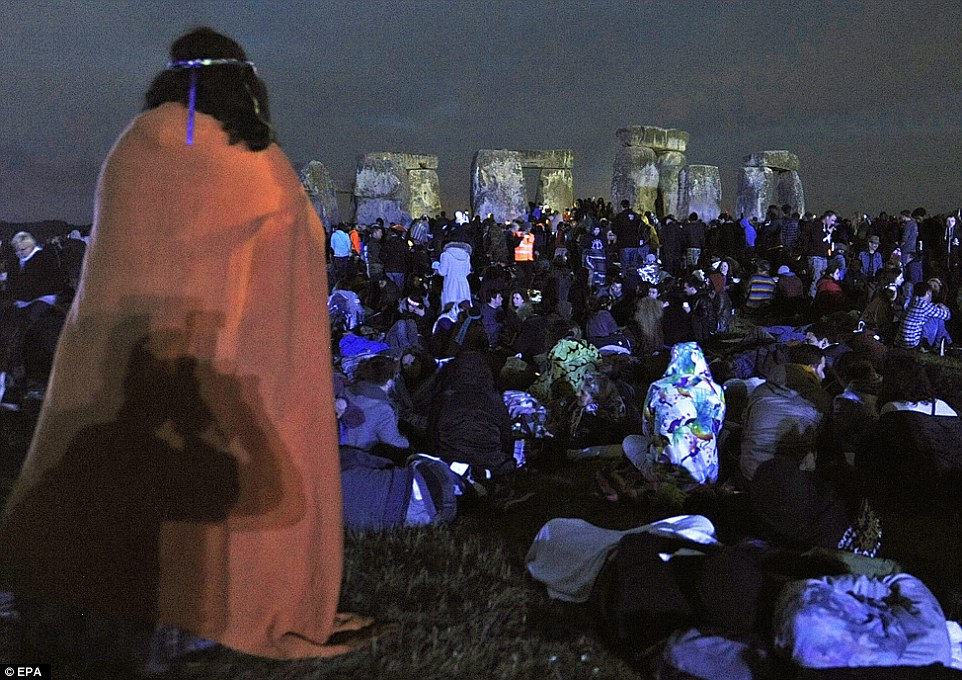
Better behaved: Police said arrests were lower than in previous years, with nine people being held for drugs offences at Stonehenge
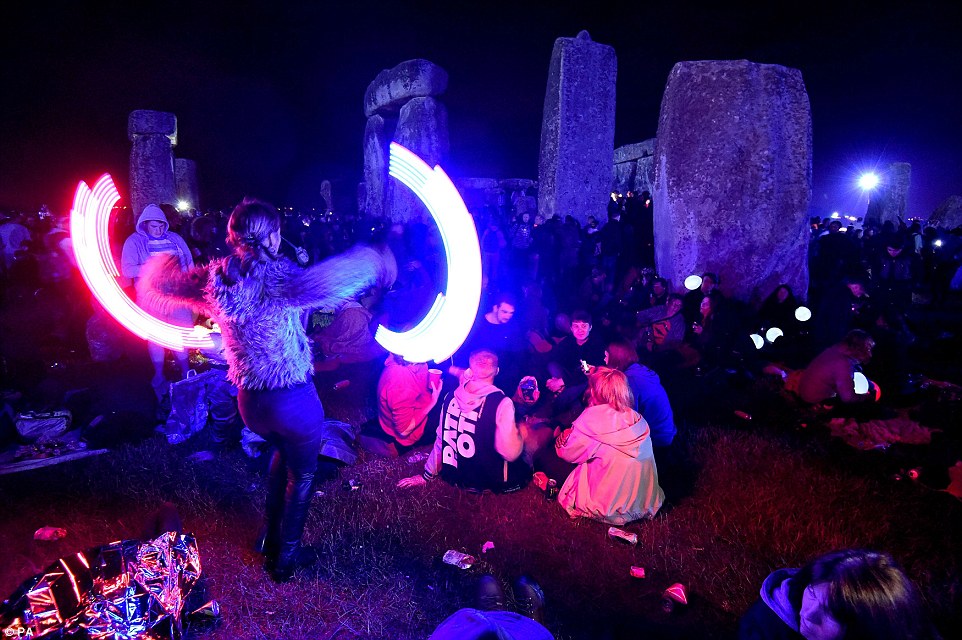
Lights: Crowds gather prior to dawn at Stonehenge in Wiltshire, as thousands of people descended on the site to mark this year's solstice
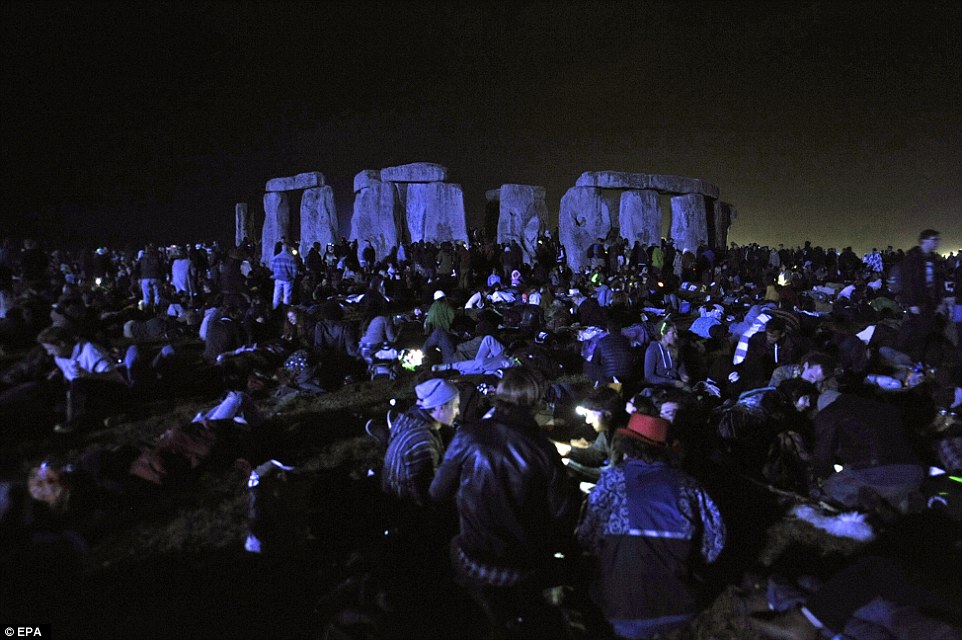 Popular: More than a million people flock to Stonehenge every year, with thousands going to ceremonies to mark summer and winter solstices
Popular: More than a million people flock to Stonehenge every year, with thousands going to ceremonies to mark summer and winter solstices
‘The success of the event depends largely on the good nature of those attending.
'And we are pleased that people could enjoy solstice in the spirit of the event.’
Stonehenge is believed to have been used as an important religious site by early Britons 4,000 years ago.
Recent pagan celebrations at the site began in the 20th century.
More than a million people flock to Stonehenge every year, with thousands attending ceremonies to mark the solstices in summer and winter.
Pagan festivals: Summer solstice

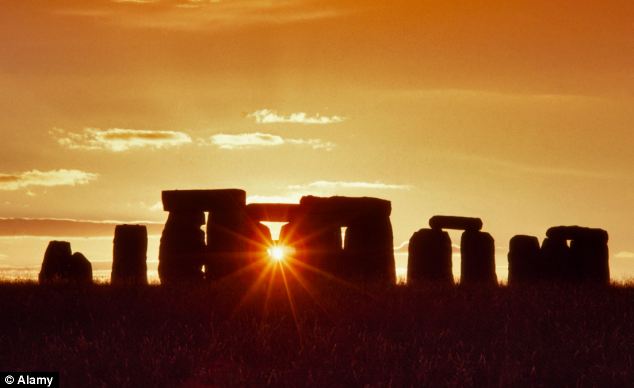
Solstice, or Litha, means a stopping or standing still of the sun
The summer solstice is the longest day of the year and is celebrated by thousands of pagans across the world. In the northern hemisphere, the solstice usually falls around 21 June
Stonehenge is believed to have been used as an important religious site by early Britons 4,000 years ago. Recent pagan celebrations at the site began in the 20th Century
On Litha, the central Altar stone at Stonehenge aligns with the Heel stone, the Slaughter stone and the rising sun to the north east

Read more: Summer Solstice sees stonehenge packed with hippies and pagans on longest day of the year | Daily Mail Online
Follow us: @MailOnline on Twitter | DailyMail on Facebook
Some 23,000 attended the neolithic site in Wiltshire, with others - including hippies and pagans - visiting the nearby Avebury stone circle.
The figure was down on the estimated 36,000 who attended last year and the 30,000 expected, to witness the sun rising on the longest day of the year.
But attendees were able to get a glimpse of the sun after it came over the horizon at 4.52am, despite cloud in the area.
Police said arrests were lower than in previous years, with nine people being held for drugs offences at Stonehenge.
A handful were cautioned for possession of Class A drugs, while no arrests were made at Avebury.
Sun rises over the longest day of the year: Thousands of pagans, druids and hippies descend on Stonehenge for this year's summer solstice
Figure was down on estimated 36,000 who attended last year and 30,000 expected at neolithic site in Wiltshire
But they were able to get a glimpse of the sun after it came over the horizon at 4.52am, despite cloud in area
Police say arrests were lower than in previous years, with nine people held for drugs offences at Stonehenge
By Mark Duell for MailOnline
21 June 2015
Daily Mail
Tens of thousands of people descended on Stonehenge this morning to mark the year's summer solstice.
Some 23,000 attended the neolithic site in Wiltshire, with others - including hippies and pagans - visiting the nearby Avebury stone circle.
The figure was down on the estimated 36,000 who attended last year and the 30,000 expected, to witness the sun rising on the longest day of the year.

Up it comes: Revellers watch the sunrise as they celebrate the pagan festival of Summer Solstice at Stonehenge in Wiltshire this morning


Flower power: The festival celebrates the year's longest day. Kate Bacik, 22, of Brighton, is seen bottom

Glorious sky: A woman takes a photograph on a phone just before the sun rises over Stonehenge at Summer Solstice in Wiltshire


Annual event: Modern druids and people gather at the landmark Stonehenge every year to see the sun rise on the longest day of the year

Musical accompaniment: It was estimated around 23,000 people attended the event, which passed relatively trouble free

Landmark: Stonehenge was constructed so the rising sun only reached the middle of the stones for just one day of the year

Forever blowing bubbles: The solstice sunrise marks the longest day of the year in the Northern Hemisphere

Big event: The solstice, also known as the festival of Litha, attracts people from across the country and has been celebrated for centuries

Feeling the power: Women touch the the stones at Stonehenge in Wiltshire, as thousands of people descended on the site to mark the event
But attendees were able to get a glimpse of the sun after it came over the horizon at 4.52am, despite cloud in the area.
Police said arrests were lower than in previous years, with nine people being held for drugs offences at Stonehenge.
A handful were cautioned for possession of Class A drugs, while no arrests were made at Avebury.
Wiltshire Police Superintendent Gavin Williams, who led the policing operation, said: ‘Solstice 2015 has been a great success.
'Approximately 23,000 people (were) celebrating at Stonehenge in the positive, friendly atmosphere as they waited for the sunrise.
‘This year the crowds were able to see the sun as it appeared over the horizon, before it disappeared under low cloud.

Neolithic site: Thousands of people have descended on Stonehenge to mark this year's Summer Solstice

Hands on: People touch the stones as thousands of revellers gathered at the ancient stone circle Stonehenge to celebrate the Summer Solstice

Welcomed in: Police said around 23,000 people attended the neolithic site in Wiltshire. The figure was down on the estimated 36,000 last year


Historic: Stonehenge is believed to have been used as an important religious site by early Britons 4,000 years ago

Better behaved: Police said arrests were lower than in previous years, with nine people being held for drugs offences at Stonehenge

Lights: Crowds gather prior to dawn at Stonehenge in Wiltshire, as thousands of people descended on the site to mark this year's solstice

‘The success of the event depends largely on the good nature of those attending.
'And we are pleased that people could enjoy solstice in the spirit of the event.’
Stonehenge is believed to have been used as an important religious site by early Britons 4,000 years ago.
Recent pagan celebrations at the site began in the 20th century.
More than a million people flock to Stonehenge every year, with thousands attending ceremonies to mark the solstices in summer and winter.
Pagan festivals: Summer solstice

Solstice, or Litha, means a stopping or standing still of the sun
The summer solstice is the longest day of the year and is celebrated by thousands of pagans across the world. In the northern hemisphere, the solstice usually falls around 21 June
Stonehenge is believed to have been used as an important religious site by early Britons 4,000 years ago. Recent pagan celebrations at the site began in the 20th Century
On Litha, the central Altar stone at Stonehenge aligns with the Heel stone, the Slaughter stone and the rising sun to the north east

Read more: Summer Solstice sees stonehenge packed with hippies and pagans on longest day of the year | Daily Mail Online
Follow us: @MailOnline on Twitter | DailyMail on Facebook
Last edited:



 Mat Vaillancourt @MVLibertas
Mat Vaillancourt @MVLibertas 